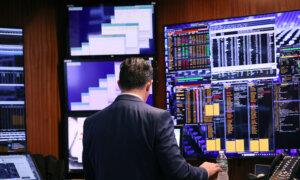Investing in the stock market has proved to be a good choice in terms of returns on your investment and building up your portfolio to reach your goals. Investing in stocks means becoming a shareholder in a company. You profit by selling shares when the company’s stock value rises or by holding it while receiving dividends.
Stocks offer greater liquidity and diversification. You can buy individual stocks, mutual funds, or exchange-traded funds (ETFs). On average, stocks have returned 8–12 percent per year over the long term. However, keep in mind that economic conditions and emotional decisions can impact returns. Optimism and excitement are the dominant emotions in the market today, so fear, doom, and gloom may return at some point, dashing your stock values significantly.
Over a long period of time stocks have proved to provide good returns to the investors. But over shorter periods volatility can create havoc or heaven, depending on the market direction:
- 20-Year Rolling Periods: According to historical data, there isn’t a single instance in which the market had a negative return over a 20-year rolling period. A time horizon measured in decades is safest.
- 10-Year Return Periods: Even during severe economic recessions and market weakness, the market has performed positively over 10-year periods. Negative returns occurred during events like the Great Depression (1930s), the Tech Bubble (early 2000s), and the Global Financial Crisis (2008).
- 1966 to 1982: While the overall stock market struggled during the period from 1966 to 1982, it’s essential to note that this poor performance primarily affected large cap stocks. Large cap refers to companies with a market capitalization greater than $10 billion, and is a shortened version of the term “large market capitalization.” Market capitalization is calculated by multiplying the number of a company’s shares outstanding by its stock price per share. Small cap stocks, on the other hand, performed well during this time.
Since the stock market bottom after the Global Financial Crisis (GFC) in March 2009, U.S. stocks have returned an impressive 16 percent annually, well above the 30-year average of about 10 percent. The Dow Jones Industrial Average (DJIA), a key U.S. stock market index, has seen significant fluctuations over the years:
- 2024: The DJIA’s average closing price is today around 38,000, with a year-to-date return of 2.6 percent.
- 2023: The index had an average closing price of 34,121, with a remarkable annual return of 13.7 percent.
- 2022: The DJIA faced volatility, averaging 32,900, ending the year with a return of -8.8 percent. Since the GFC only the pandemic year of 2020 and 2022 suffered market pullbacks.
- 2021: Despite the pandemic, the index soared to an average closing price of 34,055, with an impressive annual return of 18.7 percent.
- 2008: During the GFC, the DJIA experienced a significant decline, with an average closing price of 11,200, resulting in a staggering annual loss of -33.8 percent.
Since stocks do come with higher risk due to market volatility, they also offer significant growth potential as we see in the numbers listed above. According to various indicators, the stock market appears to be relatively expensive now. A few key historical valuation metrics that have withstood the test of time:
- Price-to-Earnings (PE) Ratio:
The PE ratio is a common measure of valuation. It compares a stock’s price to its earnings. Morningstar U.S. Market Index recently reported PE ratio of 24x. This means investors are paying 24 times the earnings for each dollar invested in the market.
Historically, this ratio has fluctuated, but the current level suggests that the stock market is relatively expensive. The average PE ratio for the S&P 500 historically is 15–16. The lowest recorded PE ratio was 5 in 1917, highest PE was 123 in May 2009, just before the Great Financial Recession (GFC). Historical data shows that the average PE ratio for the S&P 500 was roughly 13 between 1900 and 1980. However, over the next 40 years, from 1981 to 2022, the average PE ratio increased to 22 times earnings.
The Shiller PE ratio, also known as the cyclically adjusted price-to-earnings (CAPE) ratio, considers average earnings over a 10-year period. As of now, the Shiller PE stands at 31, which is 19 percent above its 200-month moving average of 26. While it’s above the historic median, it’s still well below the peaks seen in the past century.
- Buffett Indicator (Market Cap-to-GDP Ratio):
The Buffett Indicator compares the total market capitalization of all publicly traded stocks to the GDP. A ratio above 100 percent suggests overvaluation.
Currently, the Buffett Indicator stands at just under 200 percent, about two times the annual GDP, well above the historical trend line. This metric indicates the stock market is strongly overvalued relative to GDP.
Estimate of Overvaluation
Some estimates suggest that the American stock market is overvalued by 65 percent, meaning it would take a 39 percent drop to bring it back to its long-run equilibrium level. While strong earnings growth may justify higher valuations, investors should remain cautious. Keep in mind that market conditions can change rapidly, so it’s essential to stay informed and consider a diversified investment approach. I will write more about the concept of diversification in a future article. Lastly, but most importantly, always consult with a financial adviser before making any investment decisions.The Epoch Times copyright © 2024. The views and opinions expressed are those of the authors. They are meant for general informational purposes only and should not be construed or interpreted as a recommendation or solicitation. The Epoch Times does not provide investment, tax, legal, financial planning, estate planning, or any other personal finance advice. The Epoch Times holds no liability for the accuracy or timeliness of the information provided.







